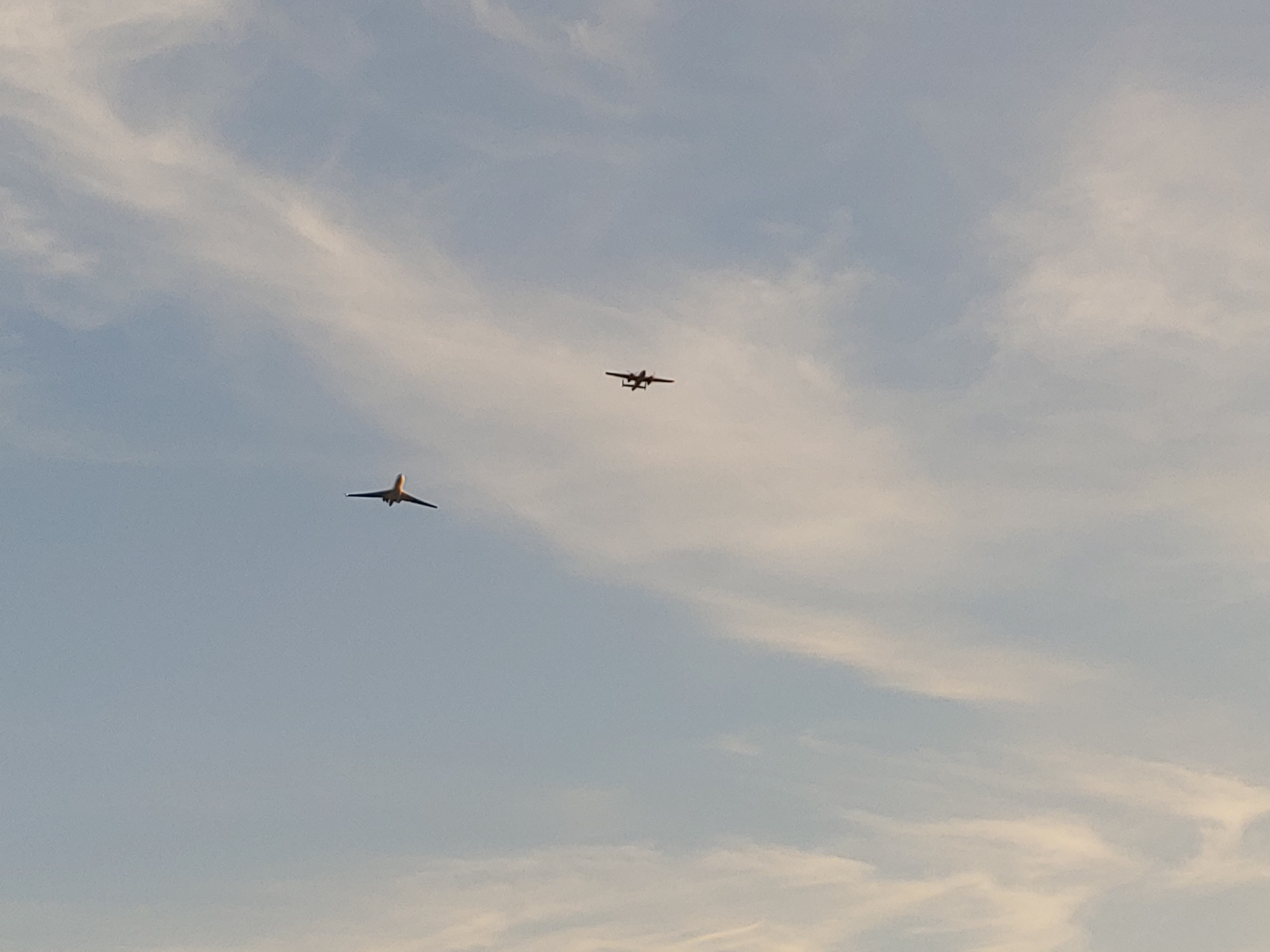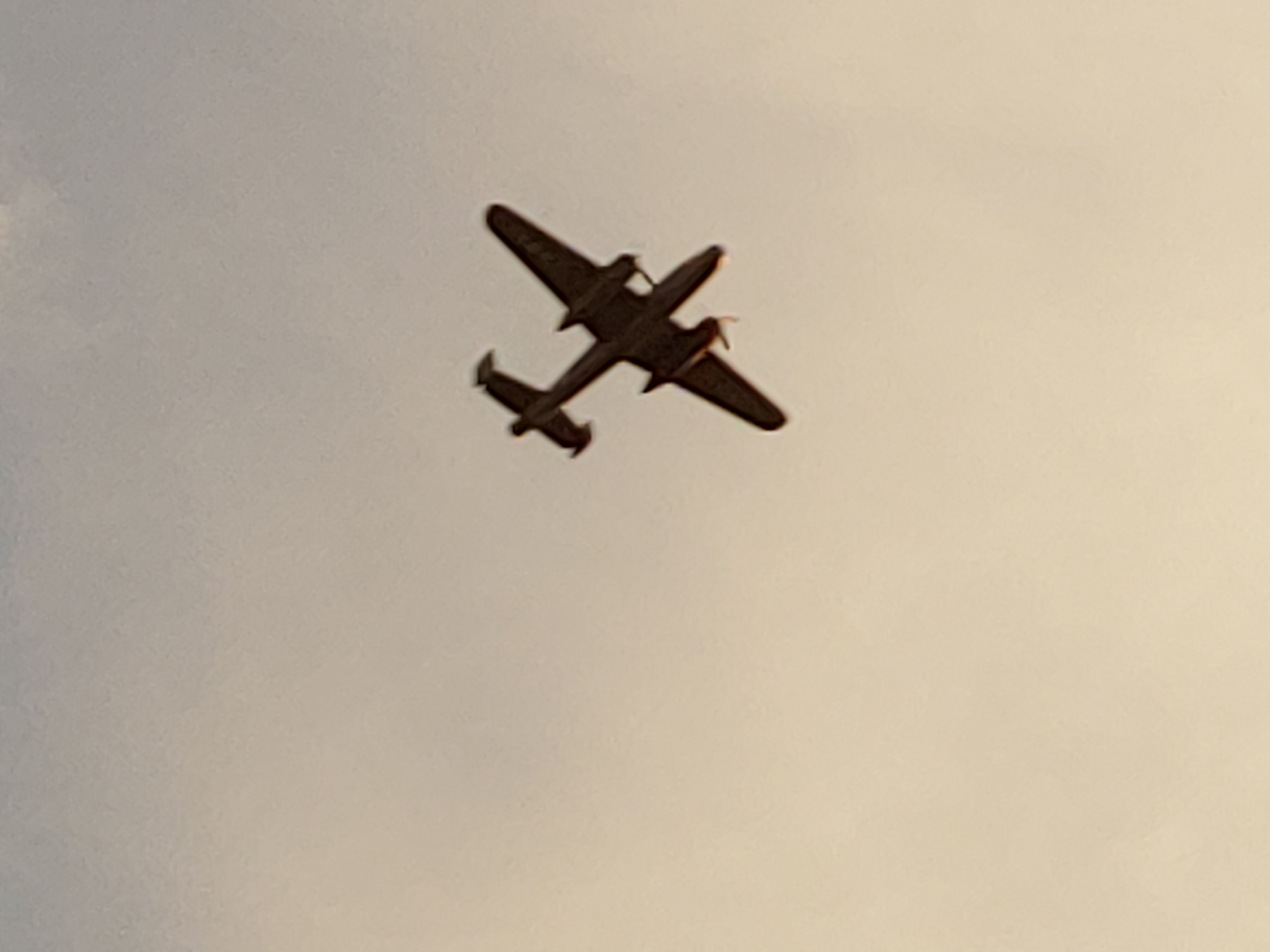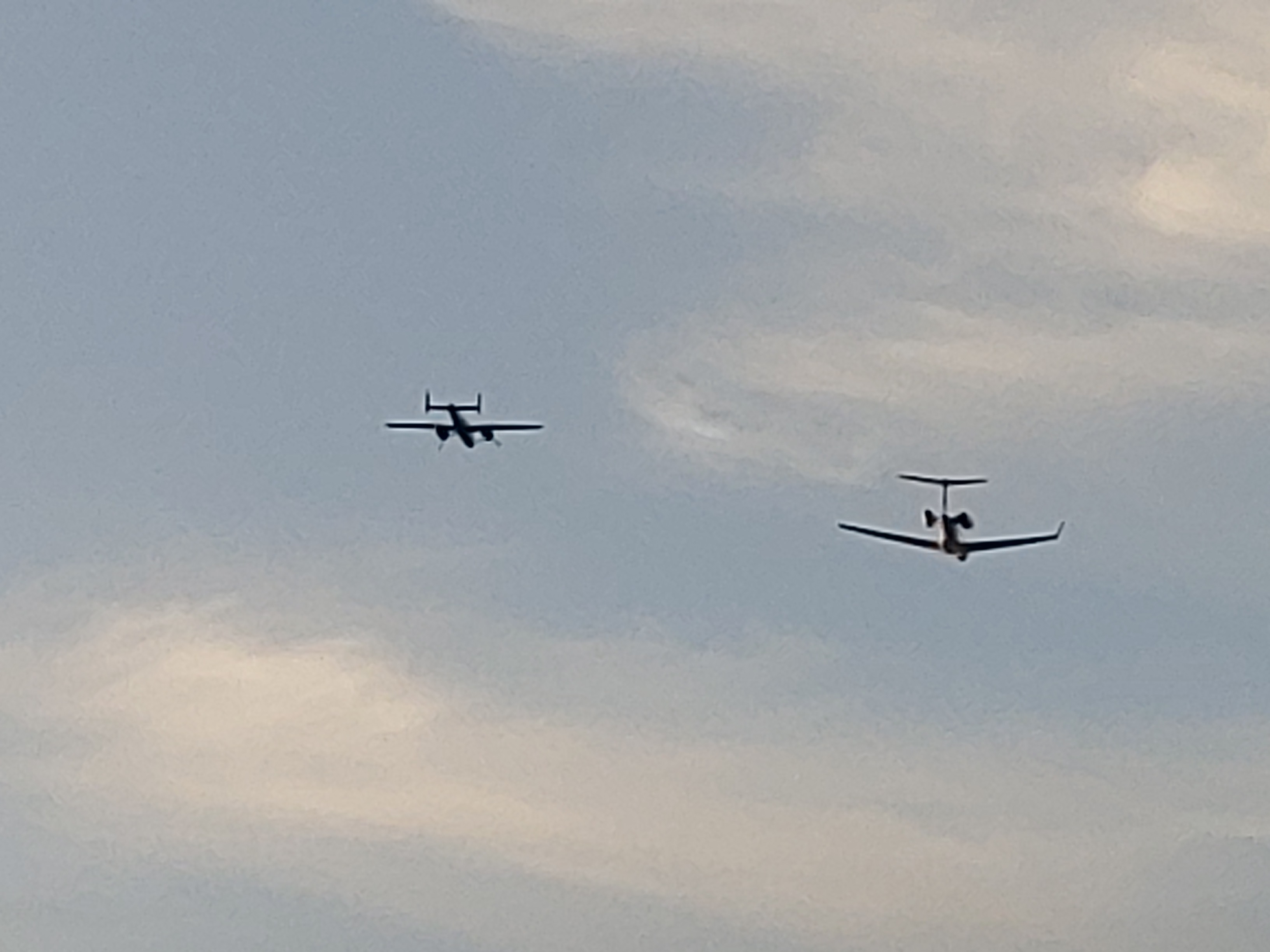
These rich boys with their big toys couldn’t have been more than maybe a 1000 feet off the surf.


These rich boys with their big toys couldn’t have been more than maybe a 1000 feet off the surf.



Ah yes.
Paul Allen’s flying museum is right next to the Boeing airfield in Mukilteo… every once in awhile I’ll hear some rumble and look into the air and see a Spitfire or Mustang or a Mosquito or B24… cool stuff 
I don’t know what model that old Bomber is but it was loud af. You could almost feel the roar.
Looks like a B25 (from the distance a B24 and 25 look very similar, but the B25 has a long rear end that sticks further out past the elevators and 2 engines vs 4.)
Also- fun fact. One of the reasons military aircraft and vehicles are so loud is because they don’t have to abide by sound or emission control.
Apparently these guys have been flying up and down the Central Coast for a few days now, word on the street is that the Gulfstream is taking aerial footage for some upcoming ad campaign
The local airport looked into this.
·
For all of you wondering what’s been going on with the aircraft the last 2 days. Gulfstream Aero has been doing photo shoots with a B-25 Mitchell & A G-280 as camera planes. The other 2 aircraft are brand new Gulfstream’s G-500 & G-600. We missed out on pics yesterday, today I arrived early to get them
Greatest plane ever flown - 1936
we were still building fucking Model-Ts
Pffft.
Everybody LURVES the sound of a R/R Merlin engine, and it’s certainly a milestone engine. It’s as good as the DB 605 engine in the Bf 109 but not arguably better, and not as big or powerful. It’s remarkable to me that both Germany and England came up with 2 different versions of virtually the same airplane, remarkably similar in so many respects, within a year of each other.
And of course, the Merlin is what saved the P-51 from being a dog. Not fair to compare the Stang and the Spit due to the 3+ years of evolutionary knowledge and design. But the common engine does give us a way to compare the airframes.
Bottom line, the Spit had less weight, less power and a bit more wing area than the Bf109 but in dogfights one could turn faster and the other could climb faster.
And DOUBLE PFFFT to your vid clip. English pilots were doing that bridge thing in WW1, and I think Richtofen also did it at least once with his tri-plane. Being able to fly under a bridge is of no consequence in a dogfight.
When the British took delivery of the Mustang they had to be taken to the fucking ER from laughing
Performance sucked
RR saved the Mustang -
We can discuss rates of climb if you wish, which is everything - you shud decline
Didn’t I just SAY that?
Oh we shall, all right, since you didn’t take the hint in my prior post.
But first, we interrupt this matter for a word from our sponsors at wikipedia.
In November 1942 a Spitfire VB EN830 NX-X of 131 Squadron made a forced landing in a turnip field at Dielament Manor, Trinity, Jersey, under German occupation at the time. This aircraft was repairable and started being test flown in German markings and colours at the Luftwaffe’s central research facilities at Erprobungsstelle Rechlin. There it was proposed that the Spitfire’s Merlin engine should be replaced by a Daimler-Benz DB 605A inverted Vee-12 engine; the Spitfire was sent to Echterdingen, south of Stuttgart, where Daimler-Benz operated a flight testing division.[99]
When the Merlin engine was removed it was discovered that the fuselage cross section was virtually identical to that of the engine nacelle of a Messerschmitt Bf 110G. Consequently, a new engine support structure was built onto the Spitfire’s fuselage and the DB 605 engine and cowling panels added. A propeller unit and supercharger air intake from a Bf 109 G completed the installation.[99]
Other changes made were to replace the Spitfire instruments with German types, and to change the 12-volt electrical system to the German 24-volt type. In this form the Daimler-Benz Spitfire started flying in early 1944. It was popular with German pilots and was flown regularly until destroyed in a USAAF bombing raid on 14 August 1944.
Rates of climb… let’s not talk about the later stuff, let’s talk about the Battle of Britain. Most of the Spits were still Mk i, some were Mk II, and most of them had got rid of the original 2-bladed wood propellers in various upgrades… but Mk Vs they were not. Mk IIs had the Merlin XII engine and the new Rotol prop, and for the sake of argument we’ll pretend all the Mk I Spits were upgraded to this level even though that’s not so.
MK IIA rate of climb at 5 thousand feet: 2995 ft/min
Bf 109E and Bf109F max rate of climb at 5 thousand feet: 3320 ft/min
Sopwith Camel
Cheery picking times?
That’s a Mk VB Spitfire. Not in service until after mid-1941, after the Battle of Britain. By that time the Messerschmitts were up to the Bf 109G which also had a bigger engine.
BTW the Bf 109s were fuel injected from the beginning, eliminating a whole bunch of problems the limeys had with carburetion in zero-G maneuvers.
I haven’t even mentioned that although Spitfires captured the public imagination and got all the glory for saving London, they only shot down half the Nazis. Hurricanes kilt the rest of em.
The German planes had a horrible view - some Spitfire pilot got in a 109 at an airshow and said he wishes he would have known how limited the view was when he was fighting them
I believe the carb problem was in a dive which was a big problem -